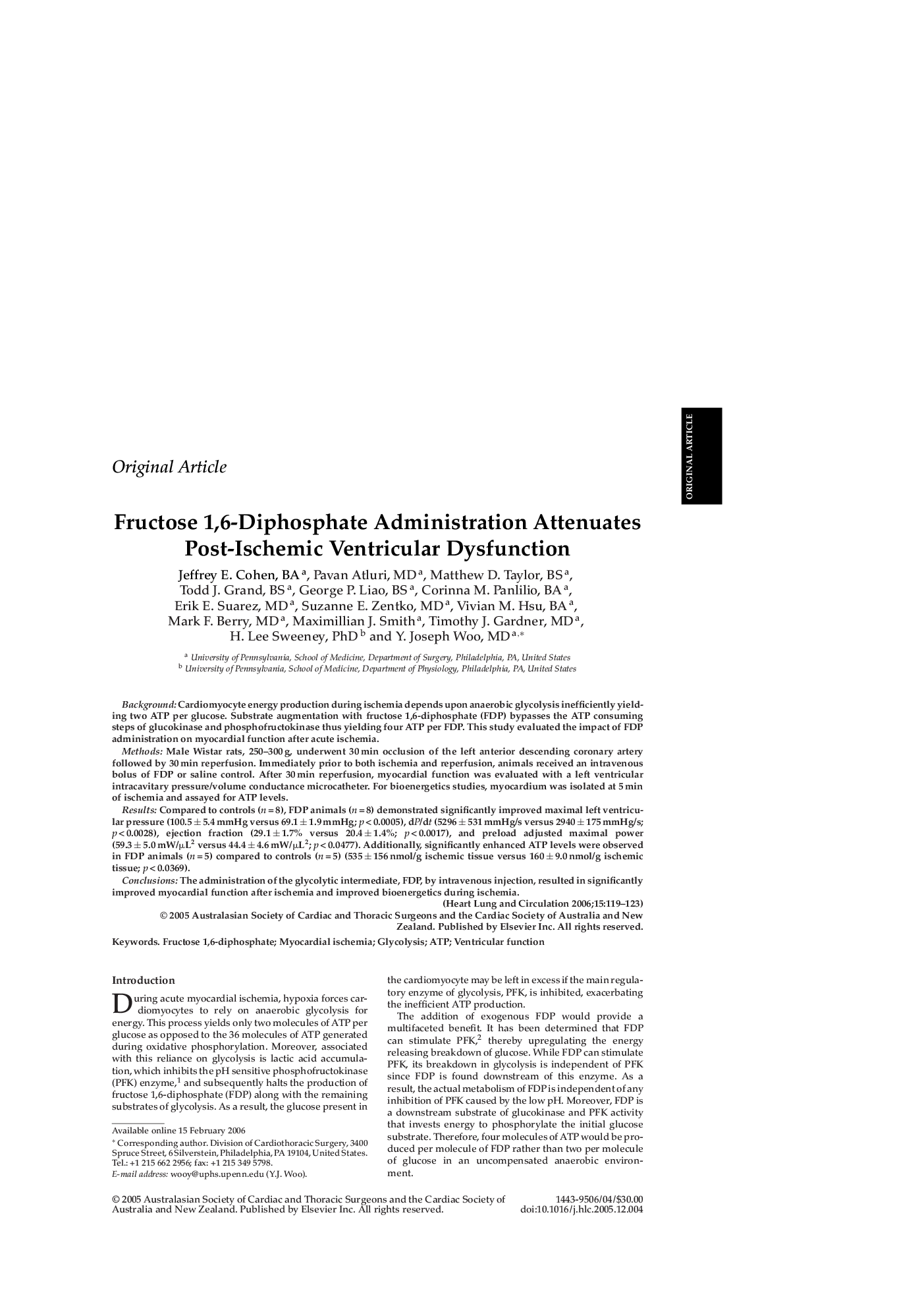| Article ID | Journal | Published Year | Pages | File Type |
|---|---|---|---|---|
| 2920586 | Heart, Lung and Circulation | 2006 | 5 Pages |
BackgroundCardiomyocyte energy production during ischemia depends upon anaerobic glycolysis inefficiently yielding two ATP per glucose. Substrate augmentation with fructose 1,6-diphosphate (FDP) bypasses the ATP consuming steps of glucokinase and phosphofructokinase thus yielding four ATP per FDP. This study evaluated the impact of FDP administration on myocardial function after acute ischemia.MethodsMale Wistar rats, 250–300 g, underwent 30 min occlusion of the left anterior descending coronary artery followed by 30 min reperfusion. Immediately prior to both ischemia and reperfusion, animals received an intravenous bolus of FDP or saline control. After 30 min reperfusion, myocardial function was evaluated with a left ventricular intracavitary pressure/volume conductance microcatheter. For bioenergetics studies, myocardium was isolated at 5 min of ischemia and assayed for ATP levels.ResultsCompared to controls (n = 8), FDP animals (n = 8) demonstrated significantly improved maximal left ventricular pressure (100.5 ± 5.4 mmHg versus 69.1 ± 1.9 mmHg; p < 0.0005), dP/dt (5296 ± 531 mmHg/s versus 2940 ± 175 mmHg/s; p < 0.0028), ejection fraction (29.1 ± 1.7% versus 20.4 ± 1.4%; p < 0.0017), and preload adjusted maximal power (59.3 ± 5.0 mW/μL2 versus 44.4 ± 4.6 mW/μL2; p < 0.0477). Additionally, significantly enhanced ATP levels were observed in FDP animals (n = 5) compared to controls (n = 5) (535 ± 156 nmol/g ischemic tissue versus 160 ± 9.0 nmol/g ischemic tissue; p < 0.0369).ConclusionsThe administration of the glycolytic intermediate, FDP, by intravenous injection, resulted in significantly improved myocardial function after ischemia and improved bioenergetics during ischemia.
